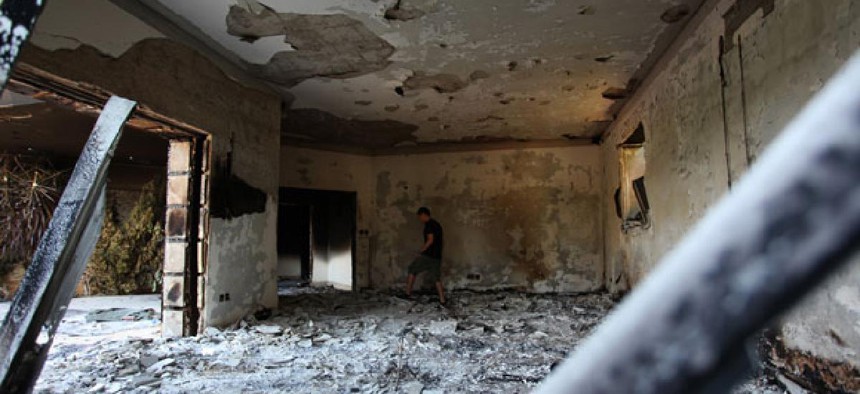
The United States Consulate in Benghazi was attacked last month. Mohammad Hannon/AP
At Libya consulate, security plans, ambassador’s itinerary scattered on floor
More than three weeks after the attack, U.S. has been unable to secure the compound.
A reporter for The Washington Post was able to visit the U.S. mission to Libya in Benghazi, and found sensitive documents still there, including security procedures for the compound and a full itinerary for slain Ambassador Chris Stevens.
According to The Post, among the items scattered across the looted compound included “Documents detailing weapons collection efforts, emergency evacuation protocols, the full internal itinerary of Ambassador J. Christopher Stevens’s trip and the personnel records of Libyans who were contracted to secure the mission.”
One of the documents found, dated Sept. 9, discussed the possibility of an attack on the compound, two days before the assault.
The documents also revealed personal information about locally contracted militia who were hired by the U.S. to provide security for the consulate.
More than three weeks after the attack, the United States has been unable to secure the site and officials remain fearful of sending Americans there. FBI investigators remain in Tripoli, hundreds of miles away from the consulate, The Post reported
Referring to Stevens, The Post reported that the documents also include “a near-full accounting of his movements during what was supposed to be a visit that lasted from Sept. 10 until Sept. 15.” The highlight of the visit to Benghazi, according to The Post, was to be the opening of the American Space, a “a center intended to serve as a hub for U.S. culture and education.”






